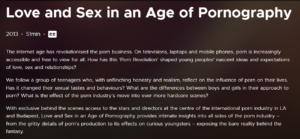
Before analyzing the film, we must examine subjectivity, which is essential in shaping sexuality. Sexuality may vary by upbringing, religion, and culture. One’s worldview largely shapes gender roles, sexual expression, and relationships. A conservative religious home may have a more traditional view of relationships than a liberal one. Second, subjectivity influences sexuality. Our values and beliefs significantly influence our sexuality. Traditionalists may exhibit their sexuality differently than open-minded people. They dress, talk, and interact this way. Third, subjectivity influences sexuality. Our values and beliefs shape how we interpret the sexual expression, relationships, and ourselves. Conservative religious parents may consider certain sexual acts sinful.
On the other hand, someone raised in a more accepting environment may find them perfectly acceptable. Finally, subjectivity can influence how we accept and reject various forms of sexual expression. We may reject or accept certain sexual expressions or behaviour based on our values and beliefs. For example, someone raised in a conservative religious household may reject premarital sex, whereas someone raised in a more liberal environment may accept it.
One of the main themes throughout this film is that not only are young people seeing intercourse play out in an incredibly heightened, far from the normal environment, but it is influencing the way they approach sex in their own lives. It creates unrealistic expectations for one discovering their sexuality and acting on it. Because sex and sexuality are often (especially in the past) uncomfortable to talk about, many young people would use pornography and online resources to help them learn about these topics.
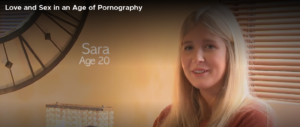
Another important theme is how pornography and sexuality are viewed as things that must occur and be discussed behind closed doors. Sara, for example, discusses how she noticed that boys in her school would watch pornography and openly discuss it, which made her uncomfortable (14:00).
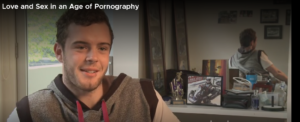
Joel talks about how when he first watched pornography, he felt guilty and could not face his mother when he got home and that he felt that he had something wrong (15:20). These two scenarios shape our perceptions of sexuality, particularly as young people discover their ever-changing bodies and sexualities. It demonstrates that sexuality should be openly discussed rather than something to be ashamed of. I believe that it is also important to note how boys view pornography vs girls. Boys feel confident and empowered watching pornography in their groups at school, yet girls are told it is wrong for them to do it. Girls are far more policed when it comes to sex and their sexualities compared to boys. Also, in our module, posters of women saying stuff like “She may look clean but” regarding sexually transmitted diseases like women are the problem, and they are the ones that spread it when we now know both genders can quickly spread many sexually transmitted infections.
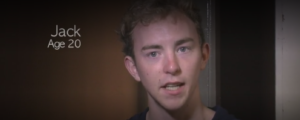
Also, because sexuality is something we shy away from when young adults enjoy watching non-heternormative sexual relationships, they feel as if they are not normal and feel emotions such as shame and embarrassment. This can be seen by Jack, who discusses how he came to explore his sexuality through pornography. He continually tried to convince himself that he was straight and expressed “shame” (9:40) when watching homosexual relations online. He discusses how when he was 12 was the first time he typed to google “naked men” (8:28) and explored how he did not realize he was gay and struggling with his sexuality. However, we have shaped our society to believe that heteronormativity is the only way to be, and when we venture outside those imaginary lines, we are abnormal.
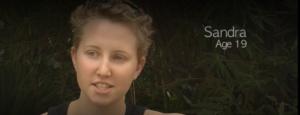
We then see the other side, Sandra, who identifies as a lesbian in the film. She discusses how she came out at 13 and did not have a girlfriend until 17, and describes it as “something private, that no one else has to know about” (10:10). She also discusses how when she first kissed a girl, she was worried if she would like it or not and confused on where she should go from there. This perpetuates a narrative that we have to either be straight, lesbian, or gay when sexuality can mean many things now a day, such as a spiritual and emotional connection that has absolutely nothing to do with the gender of the person.
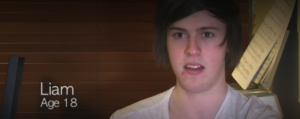
Liam discusses how porn made him eager to get out there and experience sex (10:35). Although, as we know, pornography perpetuates unrealistic expectations, which can be harmful and reinforce gender stereotypes and violence against women. While pornography is not all bad in my mind as it is a way for some people to express themselves in such a way as in a canvas for artists.

It is also necessary to note how when sexuality became a staple for clothing companies such as American Eagle, the ideas around sexuality changed. Larry Flynt explains this perfectly by saying, “pornography had made a huge difference culturally” (12:48). Before pornography was hidden. It was something that people believed was bad and gross, and dangerous. However, when it was culturally flipped to normalize sex and ones sexuality (predominantly heteronormative), it was not a subject that needed to be hidden behind closed doors.
Finally, these examples demonstrate that sexuality is more than just a biological fact and that there are other ideas to consider. Society conditions us to think sexuality is wrong, that questioning one’s sexual orientation is embarrassing, and that adhering to heteronormativity is the only acceptable orientation. Sexuality is a universal experience that every single person experiences.
References
Corlett, David. Crabbe Maree. (2013). Love and Sex in an Age of Pornography. [Film: Kanopy]. https://doi.org/10.4135/9781529708196
Speakers: St Ives, K., Spiegler, M., Ventura, J., Sechrest, J., Hirsch, M., Hardwood, A., Falco, T., Hartley, N., Stagliano, J., Flynt, L.
